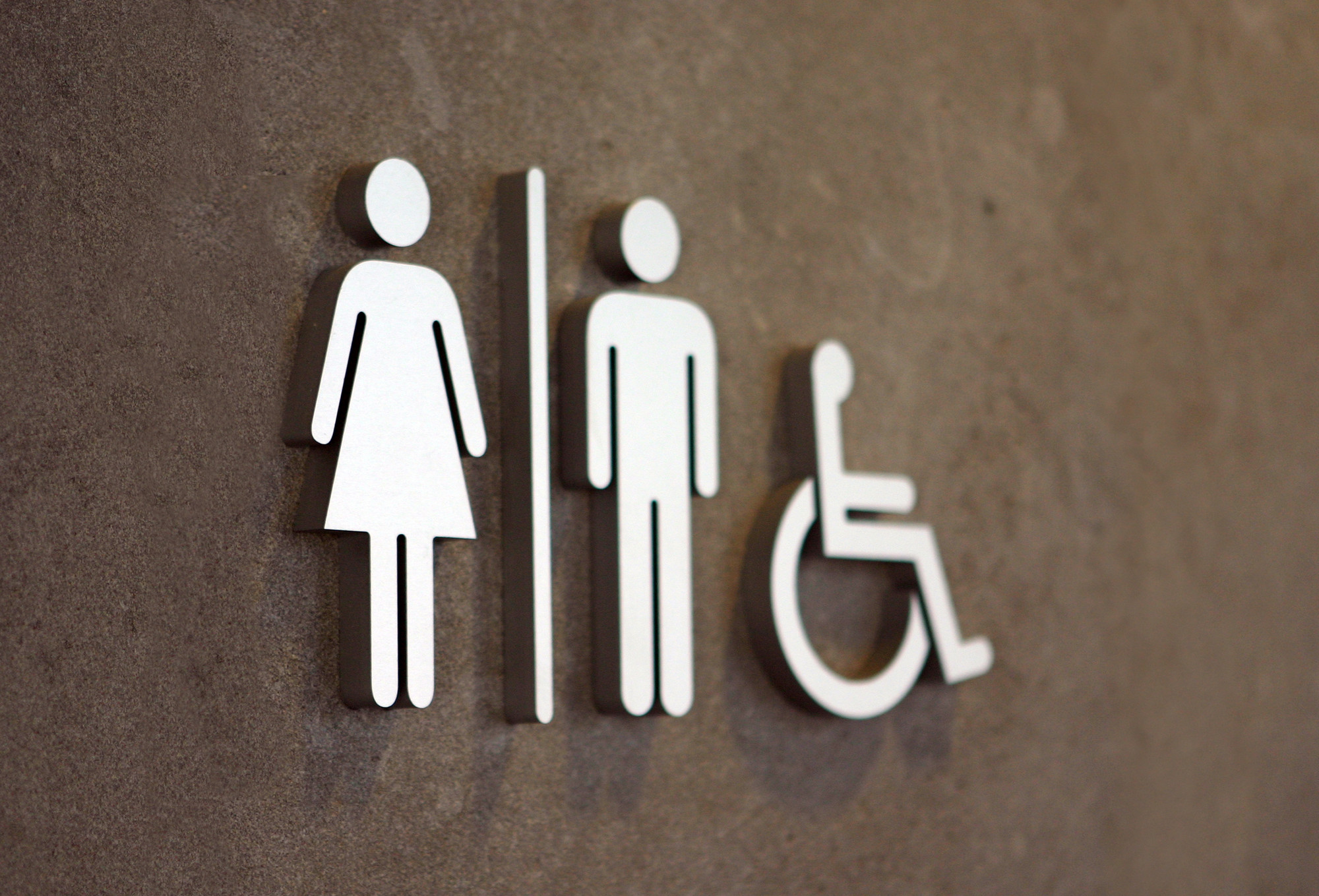
The disabled bathroom
When planning barrier-free and inclusive buildings, special attention needs to be paid to the bathroom or toilet facilities. People relying on accessibility may often encounter hidden and insurmountable obstacles in these rooms. Learn here what to watch out for when you are planning a disabled bathroom or sanitary room.
Planning and building an accessible bathroom
The concept of barrier-free construction has already found its way into the mainstream of society. Ramps, automatic doors or ground-level access can be found in many (public) buildings. A major part of a building's accessibility and inclusivity, however, comes down to its sanitary rooms. The bathrooms and toilets in particular pose major challenges for people with disabilities. Barrier-free bathrooms and sanitary facilities are an important part of inclusive living for those in wheelchairs as well as for seniors, pregnant women or people with mental disabilities. In Germany, the DIN standard 18040-2 defines the norms for accessible bathrooms and sanitary rooms. It records the most important aspects of barrier-free construction. In Switzerland, these requirements are written down in the SIA 500. But what do these standards actually mean for planning a barrier-free or disabled bathroom?
Planning principles for disabled sanitary rooms
If you find yourself in the middle of the planning phase of a disabled bathroom or accessible sanitary rooms, the following minimum measurements can help you with your planning. The numbers are the minimum disabled bathroom dimensions you should plan with to ensure the accessibility of the bathroom.
| Sanitary room with bath, toilet and washbasin/sink | 180 x 235 cm |
| Sanitary room with walk-in shower, toilet and washbasin/sink | 180 x 165 cm |
| Sanitary room with toilet and washbasin/sink | 180 x 165 cm |
Have a look at our practical disabled bathroom layout:
Floor plan after renovation
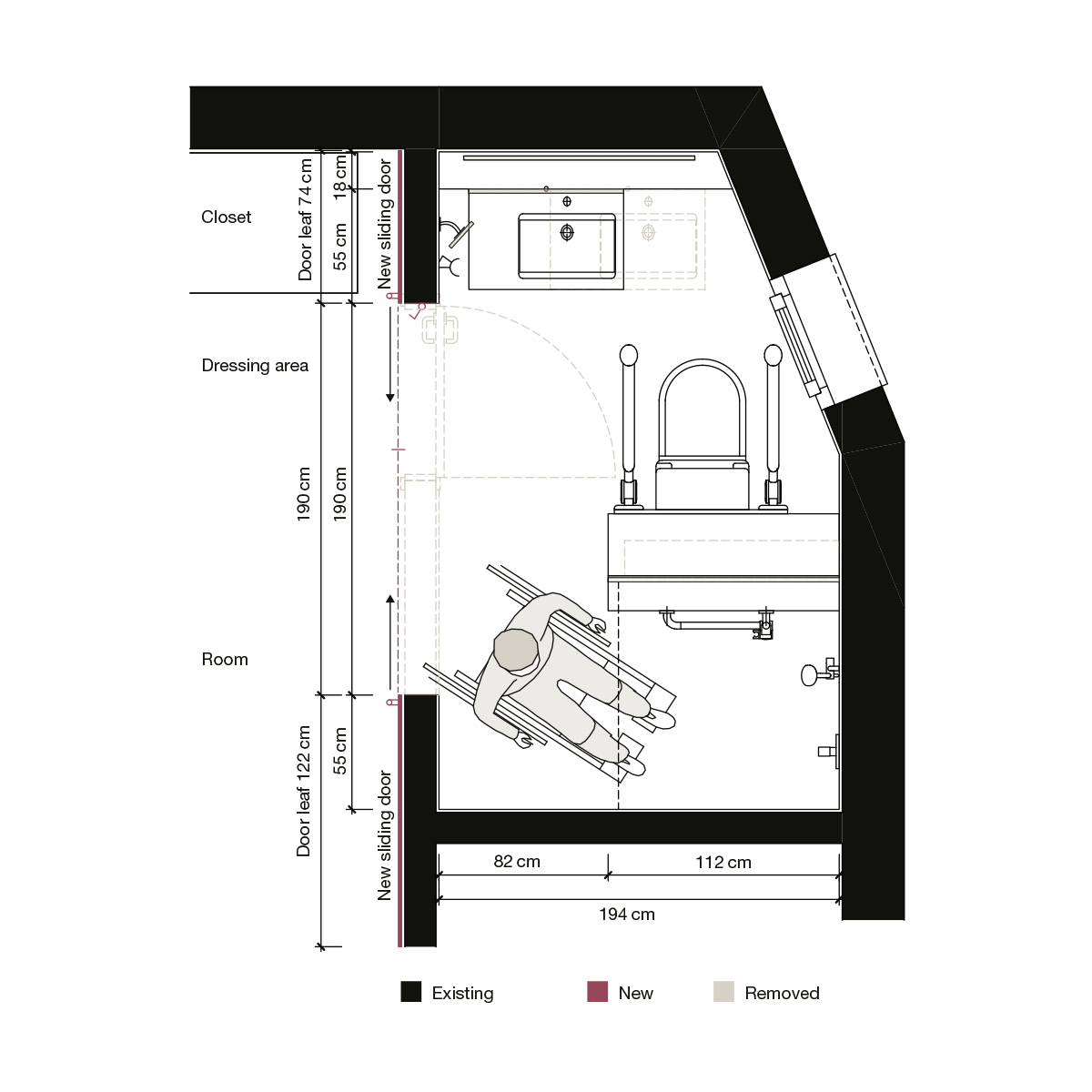
How to plan and implement your disabled bathroom design
Make sure to adhere to the above-mentioned size requirements to ensure sufficient space for the use of the sanitary facilities. We recommend to also consider the following points during your planning:
- Place the toilet in such a way that there is enough space in front of and next to it. In addition, we recommend installing handrails as well as adjusting the height of the toilet in accordance with the height of the residents.
- The shower should have ground level access and it should be large enough to be used with a wheelchair. Here as well, enough space in front of the shower should be planned in.
- A seat in the shower or wet cell offers additional safety.
- Functionality and height of the shower faucets should be adapted to the residents' individual needs.
- The residents' individual requirements should also be taken into account when installing the sink (height, wheelchair accessibility to use it while seated, etc.).
- Control elements should be easy to use.
- Avoid using hinged doors as they can easily represent an obstacle. Hinged doors should always open outwards if installed.
- The door width should measure at least 80 cm.
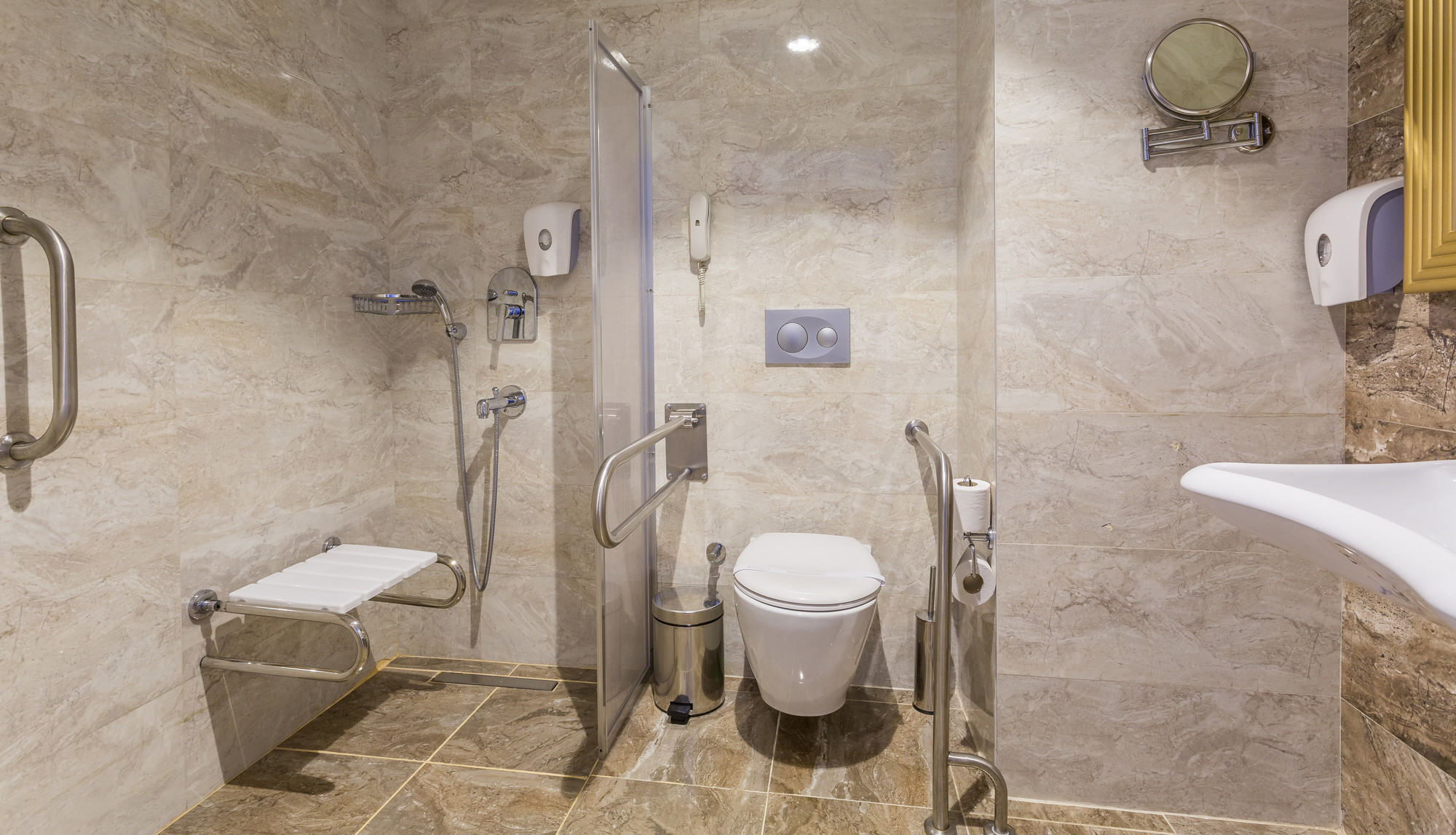
Barrier-free doors in disabled bathrooms: Know what's important
In addition, particular attention should be paid to the placement and type of doors you are going to use when planning a disabled compliant bathroom. It is important to place the door in such a way that there is enough maneuvering space for wheelchairs. It is also essential that the doors can be operated easily and without great effort. Other handicap-friendly bathroom features include:
- A minimum width of 80 cm for internal doors
- Door easy to open and close
- No thresholds or other tripping hazards are in the way
- The door should be easily recognisable and visually stand out from the wall
- For safety reasons, it should be possible to open an adapted bathroom from the outside, too
Sliding doors for disabled access are always recommended for barrier-free construction projects, as they meet the accessibility requirements in multiple respects. Sliding doors also require less space within the room, as they occupy much less space for opening and closing than a conventional door.
Modern disabled bathrooms: design and elegance
Sorry to break the news to you, but if an outdated and drab design comes to your mind when you hear the term “disabled bathroom”, you could not be any further from the truth. Barrier-free construction offers countless possibilities for combining functionality with modern bathroom designs. Open, bright and stylish accessible bathrooms are no longer a rarity. The market has reacted to the growing demand and has significantly increased the number of built-in solutions. In most cases, the necessary space requirements in a handicap-friendly and wheelchair accessible bathroom create an open and spacious atmosphere which underlines the feel-good character.
Hawa: Your expert for sliding door hardware
Hawa is the market and technology leader for sliding door fittings. For disabled access construction, Hawa offers two product solutions which meet all of the aforementioned requirements:
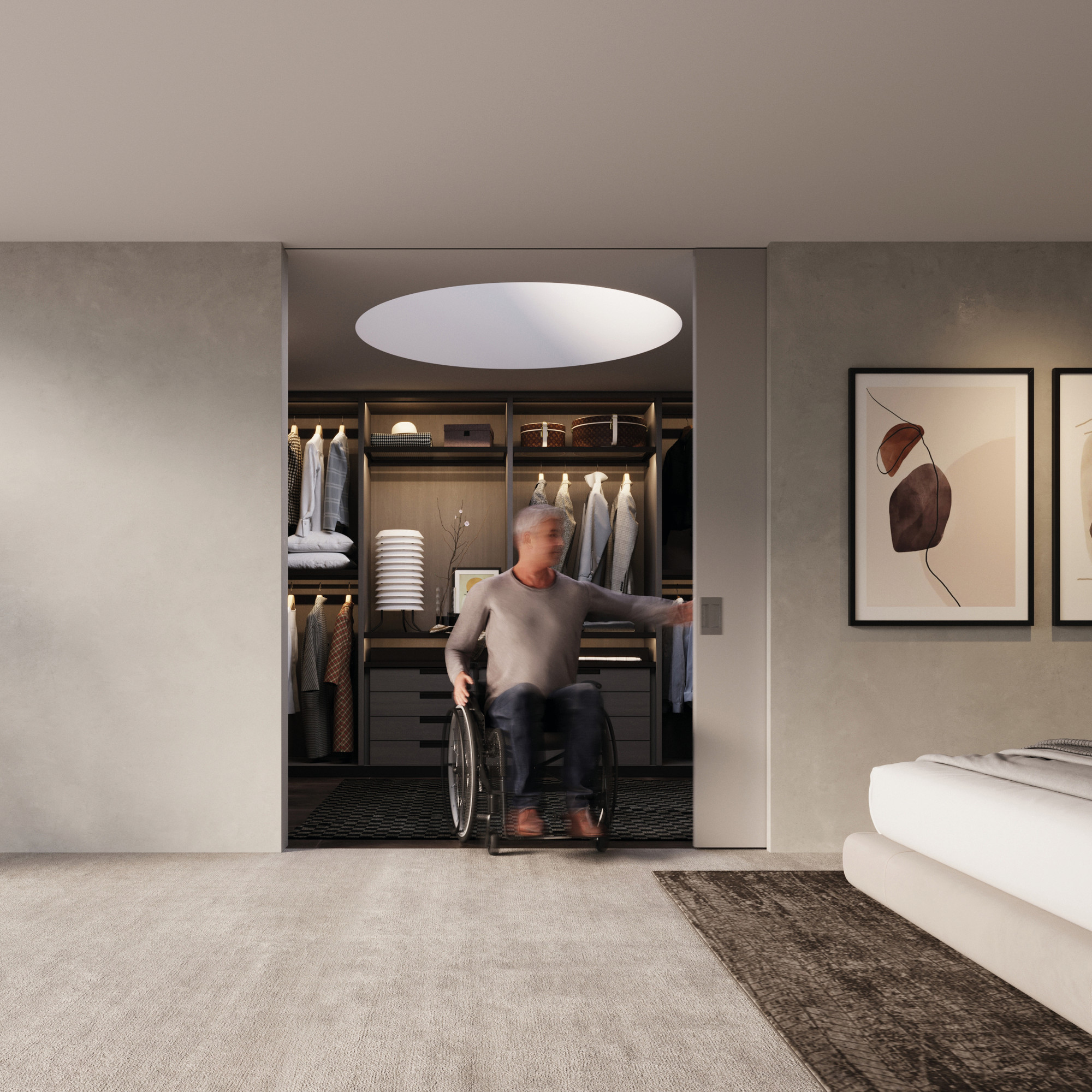
Hawa Junior 100: Sliding door fittings for wooden doors of up to 100 kgEnter headline here
Hawa Junior is the perfect solution for installations in specialist baths for the disabled. It moves wooden sliding doors up to 100 kg with easy handling and minimal effort. Thanks to its innovative magnetic damping system, the opening force is a maximum of 22 N. Find out more about Hawa Junior 100 here:
Learn more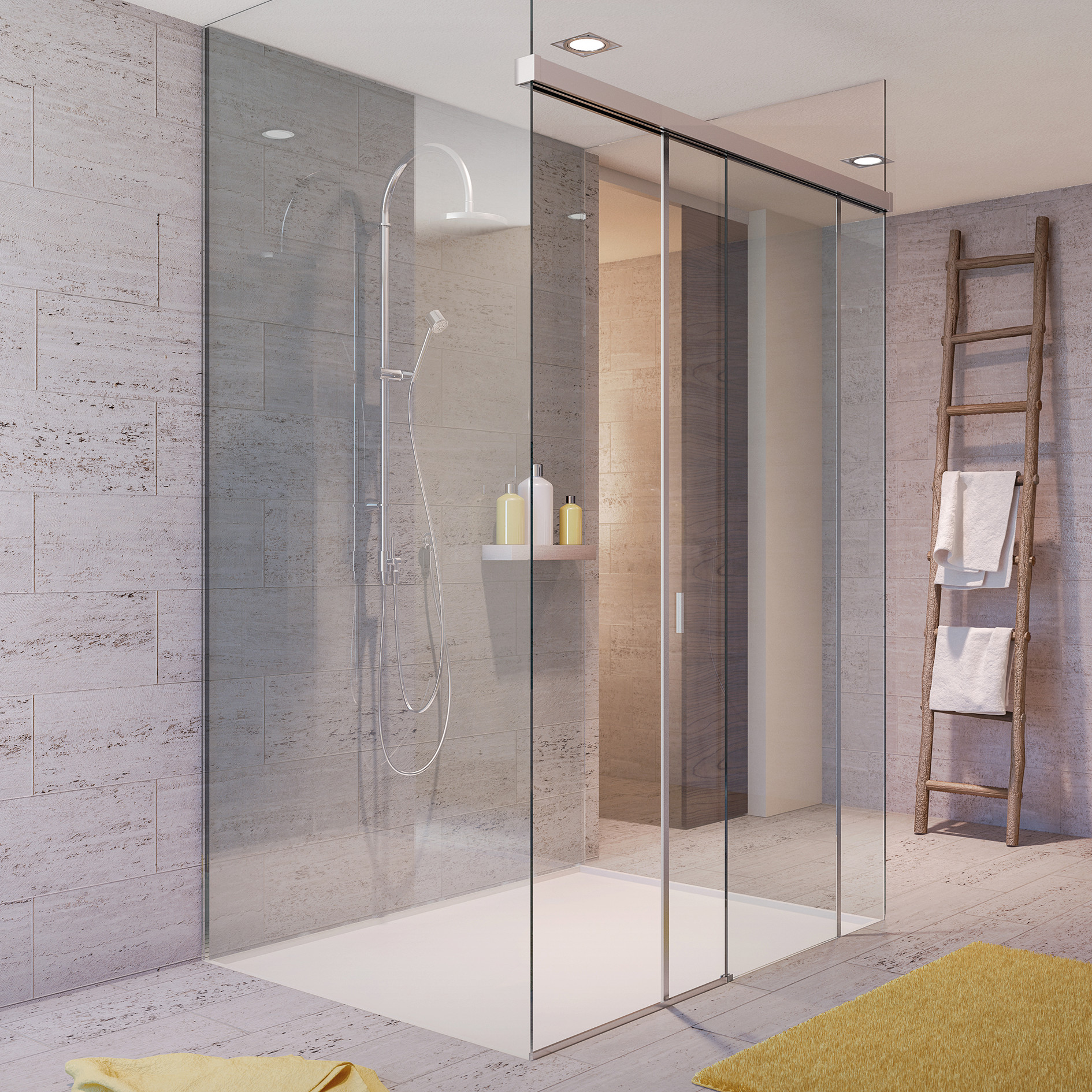
Hawa Banio: Accessible shower door
Accessibility should also be taken into account when choosing the shower enclosure. Additional freedom of movement can be achieved by using sliding doors in the wet room. Hawa Banio sliding door fittings for all-glass shower panels combine accessibility with an elegant design, the highest standards of hygiene thanks to splash-proof closures and very easy handling.
Learn more